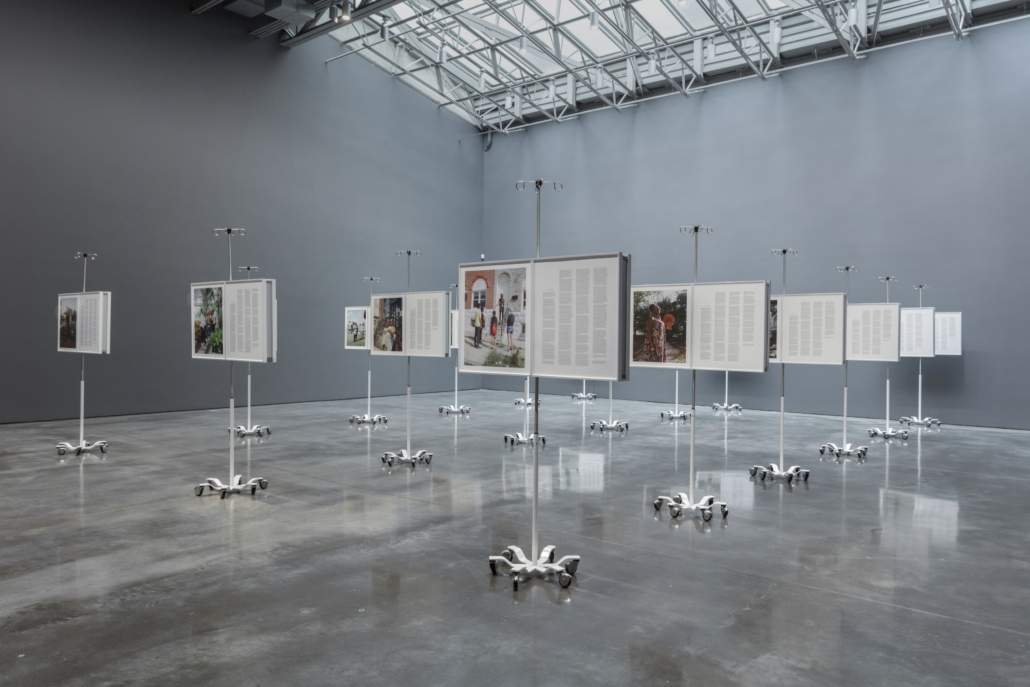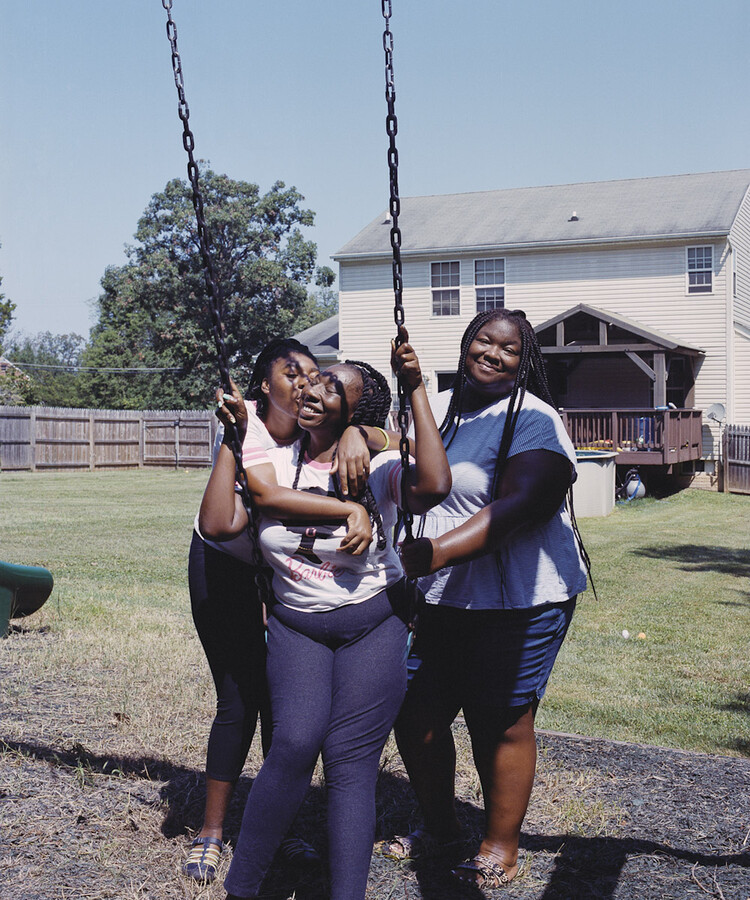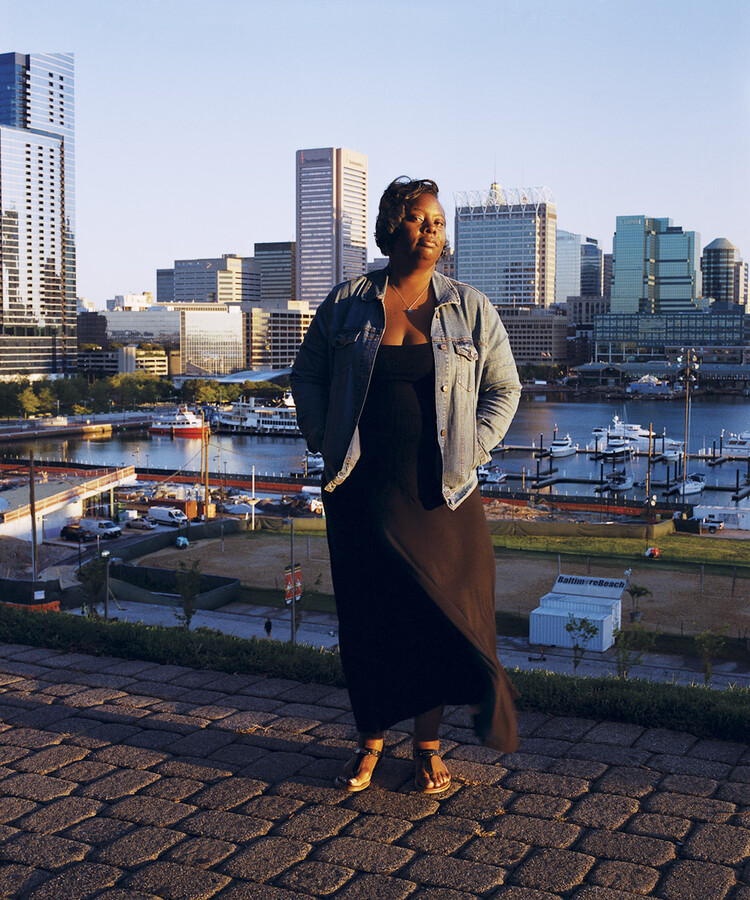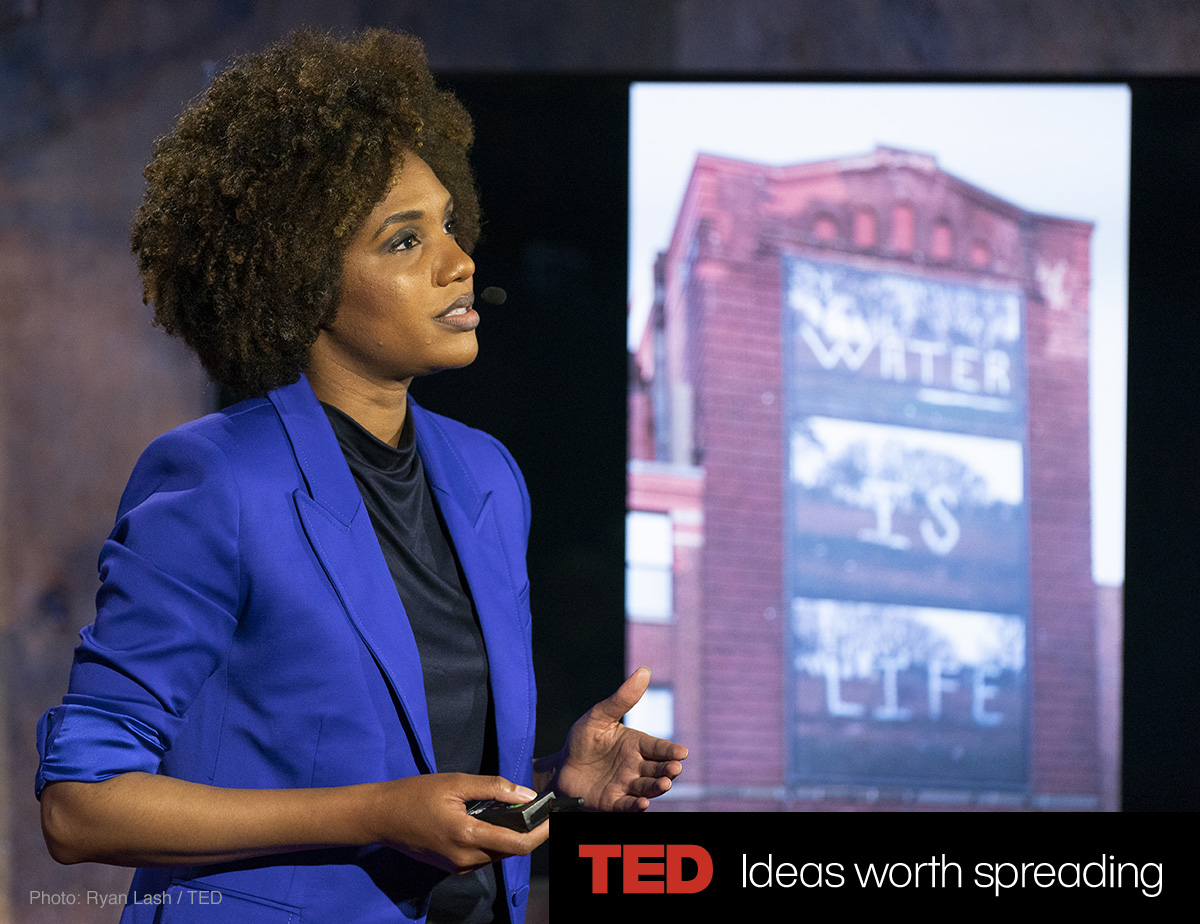Photography Report: Imaging Racial Capital
e-flux Criticism
by KJ Abudu

View of “LaToya Ruby Frazier: More Than Conquerors: A Monument for Community Health Workers of Baltimore, Maryland 2021-2022” at Gladstone Gallery, New York, 2023. Image courtesy of Gladstone Gallery.
That photography has become one of the most banal visual interfaces in twenty-first-century life is no new observation. Every day, millions of people upload scores of images to privatized servers; encounter even more images on algorithmically governed online platforms; and craft their lives in accordance with the cohesive textures of branded imagery. With this, one might ask whether photography’s critical force and relevance has waned in our image-saturated present or, conversely, if its pertinence has been heightened by the unique burden it bears in reflecting on its ethical, political, and aesthetic relation to the accumulating heap of images. Three recent photography-led exhibitions in New York City forged unexpectedly generative dialogues, laying bare photography’s embodied contradictions. These exhibitions, by LaToya Ruby Frazier, Tina Barney, and Buck Ellison, suggest that the medium’s dissonant valences symptomize the wider social contradictions of racial capital and its attendant global crises.1
Installed at Gladstone Gallery is LaToya Ruby Frazier’s More Than Conquerors: A Monument for Community Health Workers of Baltimore, Maryland (2021–22)—after its first showing at the 58th Carnegie International, for which it won the Carnegie Prize. Eighteen metal IV poles are arranged into a minimal grid, their fluid-filled bags notably absent, evoking the spectral gravity of millions of corpses produced at the height of the pandemic. The poles, distanced from one another in accordance with social distancing protocols, gain an uncanny anthropomorphized presence with each pole bearing four frames, two viewable from each side.

La Kerry Dawson With Her Daughter Angel Crowder And Her Personal Supports Specialist Jocelyn M. Jones At Home, Baltimore, Maryland 2021. Part of LaToya Ruby Frazier, More Than Conquerors: A Monument For Community Health Workers Of Baltimore, Maryland 2021-2022, 2022. Eighteen stainless steel IV poles, sixty-six archival inkjet prints, dimensions variable. Image courtesy of the artist and Gladstone Gallery, New York.
Appearing on the front side are diptych portraits of eighteen community healthcare workers (CHWs). These workers function as a critical bridge between the healthcare system and under-resourced communities in the United States. They form, in other words, civil infrastructures that mediate the systemically produced health disparities resulting from class warfare, anti-immigration sentiment, and the afterlives of transatlantic slavery. Here, Frazier pairs realist photographic portraits of each of the workers (predominantly Black women, some of whom pose with their families, and in locations of their choosing), with edited transcriptions of interviews the artist conducted with the workers. The text panels take a while to get through—on average, about 15–20 minutes, the duration of a doctor’s appointment.2 Through this durational strategy, which at best encourages multiple return visits and an ethically attuned witnessing to the self-narrated accounts of the healthcare industry’s “foot soldiers,” but at worst risks inducing frustration, shallow intrigue or dismissal, Frazier counters the racialized logics of spectacle that structure the frenzied consumption of Black subjects on various media platforms.
On the reverse, Frazier further decenters her authorship by incorporating photographs taken by anonymous CHWs, which are then paired with shorter textual transcriptions, many bilingual—in Spanish and English. These images, which largely capture the “organized abandonment” of Baltimore’s predominantly Black-inhabited urban topography, were developed during workshops led by Frazier, in collaboration with Dr. Chidinma Ibe, an assistant professor at the John Hopkins School of Medicine (and one of the subjects in the installation who offers insights not only on the racialized, class-based health disparities within the States but also between the Global North and the Global South).3 Building off the longstanding notion of “photovoice”, brought to Frazier’s attention by Dr. Lisa Cooper, another collaborator/subject, these photographs (and Frazier’s installation as a whole) wield the medium’s evidentiary capacities to make visually palpable counter-claims in an anti-Black public sphere—in the concrete realm of policy-making.4

Tiffany Scott Standing In Federal Hill Park, Baltimore, Maryland 2021. Part of LaToya Ruby Frazier, More Than Conquerors: A Monument For Community Health Workers Of Baltimore, Maryland 2021-2022, 2022. Eighteen stainless steel IV poles, sixty-six archival inkjet prints, dimensions variable. Image courtesy of the artist and Gladstone Gallery, New York.
Some might find the politics of visibility and recognition on which these counter-claims depend problematic. Yet we ought not dismiss Frazier’s reanimation of social and conceptual documentary traditions towards these (albeit constrained) juridical ends. 5 6 At present, CHWs are paid through grants provided to healthcare institutions, and as a result, remain ineligible to receive proper compensation along with other salaried benefits, some of which might include, ironically, health insurance. To add to the structural absurdity, these are the same workers who risked their lives to administer vaccines to vulnerable populations at the beginning of the pandemic. Frazier’s (counter-)monument therefore does not operate merely on the register of representation, for its socially embedded, collectivized conditions of production as well as its broadened circuits of distribution exceed the field of art, and in so doing elaborates a mode of artistic practice that is not only about but equally of and for these ongoing labor struggles.
[…]
- Other photography-focused exhibitions, besides the ones discussed here, include Clifford Prince King at Gordon Robichaux, Susan Hiller at Lisson Gallery, Uta Barth at Tanya Bonakdar, and “Photography Then” at Anonymous.
- “NSE #785 | LaToya Ruby Frazier and Jessica Holmes, with Madison McCartha,” The Brooklyn Rail (April 2023), https://www.youtube.com/watch?v=jME3Gn2rnsU.
- This phrase is taken from Black abolitionist geographer Ruth Wilson Gilmore. Gilmore elaborates the interrelations between race-making, spatial politics, and health disparities in Abolition Geography: Essays Towards Liberation (London and New York: Verso Books, 2022).
- Press release for “LaToya Ruby Frazier: More Than Conquerors: A Monument for Community Healthcare Workers of Baltimore, Maryland, 2021-22,” Gladstone Gallery, 2023.
- Frazier’s practice recalls figures in the social documentary tradition such as Walker Evans, Gordon Parks, David Goldblatt, and Jim Goldberg; and in the conceptual (post-)documentary tradition, figures such as Allan Sekula, Fred Lonidier, and Carrie Mae Weems.
- I have in mind Saidiya Hartman’s historically grounded, Black feminist critiques of legality in Scenes of Subjection (New York and Oxford: Oxford University Press, 1997); as well as Glen Sean Coulthard’s Indigenous critiques of state recognition in Red Skin, White Masks: Rejecting the Colonial Politics of Recognition (Minneapolis: University of Minnesota Press, 2014).
Courtesy of: e-flux.com Criticism

